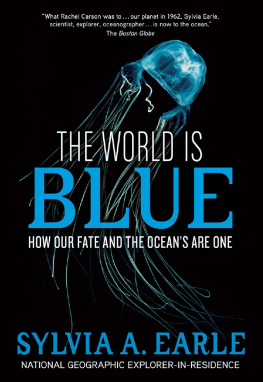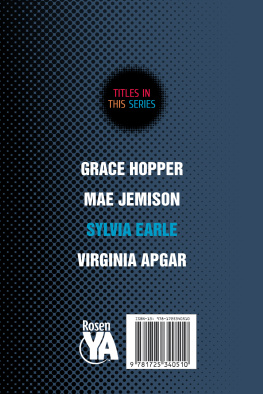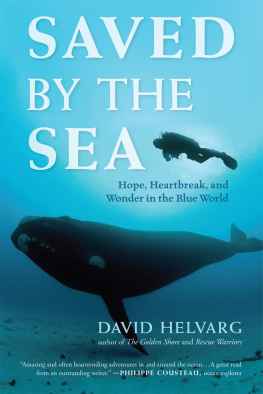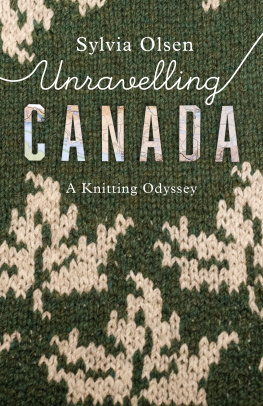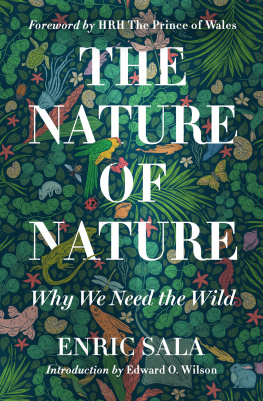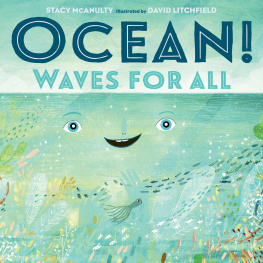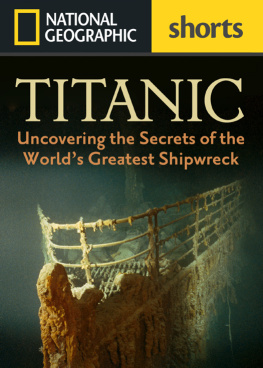THE WORLD IS BLUE
HOW OUR FATE AND THE OCEANS ARE ONE
SYLVIA A. EARLE

Published by the National Geographic Society
1145 17th Street N.W., Washington, D.C. 20036
Copyright 2009 Sylvia A. Earle. All rights reserved. Reproduction of the whole or any part of the contents without written
permission from the publisher is prohibited.
ISBN: 978-1-4262-0558-3
Library of Congress Cataloging-in-Publication Data
Earle, Sylvia A., 1935
The world is blue : how our fate and the oceans are one/Sylvia Earle.
p. cm.
1. Oceanography. 2. Marine ecology. 3. Marine biology. 4. Marine pollution. 5. Nature--Effect of human beings on. I. Title.
GC21.E28 2009
551.46--dc22
2009023972
Photo Credits: Part One, Gale Mead; Part One, Gale Mead; Chapter One, Gale Mead; Chapter One, Gale Mead; Chapter One, Sylvia Earle; Chapter One, Gale Mead; Chapter Two, Sylvia Earle; Chapter Two, Sylvia Earle; Chapter Two, Sylvia Earle; Chapter Two, Sylvia Earle; Chapter Three, Sylvia Earle; Chapter Three, Sylvia Earle; Chapter Three, Sylvia Earle; Chapter Three, Sylvia Earle; Chapter Four, Sylvia Earle; Chapter Four, Sylvia Earle; Part Two, Gale Mead; Part Two, Gale Mead; Chapter Five, Sylvia Earle; Chapter Five, Sylvia Earle; Chapter Five, Sylvia Earle; Chapter Five, Sylvia Earle; Chapter Six, Sylvia Earle; Chapter Six, Sylvia Earle; Chapter Six, Gale Mead; Chapter Seven, Gale Mead; Chapter Seven, Gale Mead; Chapter Seven, Gale Mead; Part Three, Gale Mead; Part Three, Sylvia Earle; Chapter Eight, Courtesy NOAA; Chapter Eight, Tim Taylor; Chapter Eight, Sylvia Earle; Chapter Nine, Gale Mead; Chapter Nine, Gale Mead; Chapter Nine, Gale Mead; Chapter Ten, David Guggenheim; Chapter Ten, David Guggenheim; Chapter Ten, David Guggenheim; Chapter Ten, Gale Mead; Chapter Eleven, Sylvia Earle; Chapter Eleven, Gale Mead; Back Matter, Kip Evans.
Maps Credits: Globe: Front Matter, Carl Mehler, Michael McNey
Graph: Back Matter
Louisa J. Wood, Lucy Fish, Josh Laughren, and Daniel Pauly. (2008) Assessing Progress Towards Marine Protection Targets: Shortfalls in Information
and Action. Oryx, 42(3): 340-351
World Maps: Back Matter
International Union For Conservation of Nature (IUCN); IUCN World Commission on Protected Areas (WCPA); Sea Around Us Project, Fisheries
Centre, University of British Columbia; United Nations Environment Programme (UNEP); UNEP World Conservation Monitoring Centre (WCMC);
World Wildlife Fund (WWF)
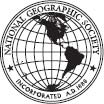
The National Geographic Society is one of the worlds largest nonprofit scientific and educational organizations. Founded in 1888 to increase and diffuse geographic knowledge, the Society works to inspire people to care about the planet. It reaches more than 325 million people worldwide each month through its official journal, National Geographic, and other magazines; National Geographic Channel; television documentaries; music; radio; films; books; DVDs; maps; exhibitions; school publishing programs; interactive media; and merchandise. National Geographic has funded more than 9,000 scientific research, conservation and exploration projects and supports an education program combating geographic illiteracy.
For more information, please call 1-800-NGS LINE (647-5463) or write to the following address:
National Geographic Society
1145 17th Street N.W.
Washington, D.C. 20036-4688 U.S.A.
Visit us online at www.nationalgeographic.com
For rights or permissions inquiries, please contact National Geographic Books Subsidiary Rights: ngbookrights@ngs.org
CONTENTS
FOREWORD
I f there is one thing most of us know about the ocean, its that its big. We may not think about it as often as we should, preoccupied with events here on land, but when we dowell, words like vast and mighty and horizon quickly come into play.
Sylvia Earle, who may know the ocean as well as any human being now alive, helps us cut that intimidating vastness down to size. She does it in two ways, both amply illustrated in this new classic book. Her first method is to bring the ocean to full lifeto remind us of the very nearly infinite abundance of things that live there, some of them things that only a few people besides her have ever laid eyes on. Many terrestrial species are still undiscovered, of course, but were pretty clear on the basic categories: beetles, things with feathers, lizards. Underwater, there are great varieties of stuff weve never even thought of, like fish that dangle lights on stalks in front of them to attract their prey. Stuff so big its hard for us to even quite imagine, such as whales, at once so other and so close. Earle, though a great scientist, is also the heir to Jacques Cousteau, inducting the landbound among us into the mysteries of the sea, helping us to feel both astonished and at ease.
But theres another, much darker, way in which Sylvia Earle helps us understand the size of the ocean. And thats to point out that, vast as it is, its not so big that we cant screw it up. Theres the dead zone at the mouth of almost every big river, and the great gyres of plastic turning slowly in every ocean, and the astonishing fact that weve managed to peer through the opaque depths of the sea with technology that has let us catch most of the biggest fish. Weve also managed to melt vast stretches of the Arctic sea, and the UV pouring through the hole weve opened in the ozone has thinned the ranks of Antarctic krill. Theres evenand no one predicted this even a decade agothe fact that weve managed to change the pH of the seas, pouring so much carbon into the atmosphere that they are fast turning acidic and corrosive.
So our job becomes protecting that gloryusing the insights and emotions, the reason and the passion, that this tour creates to make us take some serious action. This action is personalthinking before we order bluefin tuna off the sushi menu. But it is also political, because one by one were simply not going to change the pH of the ocean back to where it needs to be.
Sylvia Earles passionate lifeincluding this powerful volumecalls us to that work. But weve got to respond. Brilliant and committed as she is, Sylvia Earle is not going to save the oceans on her own. Theyre too big. But all of us dwell near the sea, even if we live a thousand miles inlandthe sea falls from the sky when it rains; every drop of water we use eventually finds its way into the ocean. It is therefore our duty, and also our delight, to take on this defining challenge of our time.
Bill McKibben, American environmentalist and bestselling author of The End of Nature and Deep Economy

This globe strikingly represents just how blue our world is: The Pacific alone covers 58,925,815 square miles of Earths surface, and thats not even half the total surface area covered by all the worlds oceans. Home to millions of species and responsible for driving climate, regulating temperatures, and governing planetary chemistry, the ocean makes life on Earth possible, and its health and protection are issues of critical importance to all of us.
INTRODUCTION: WHY CARE THAT THE WORLD IS BLUE?
Thousands have lived without lovenot one without water.
W. H. Auden

